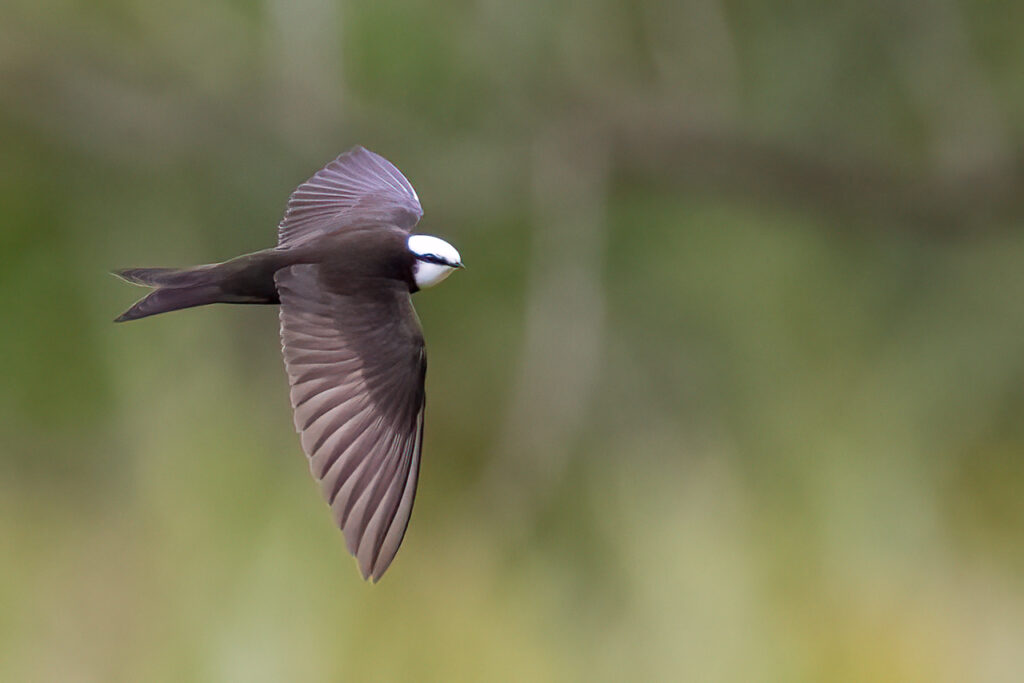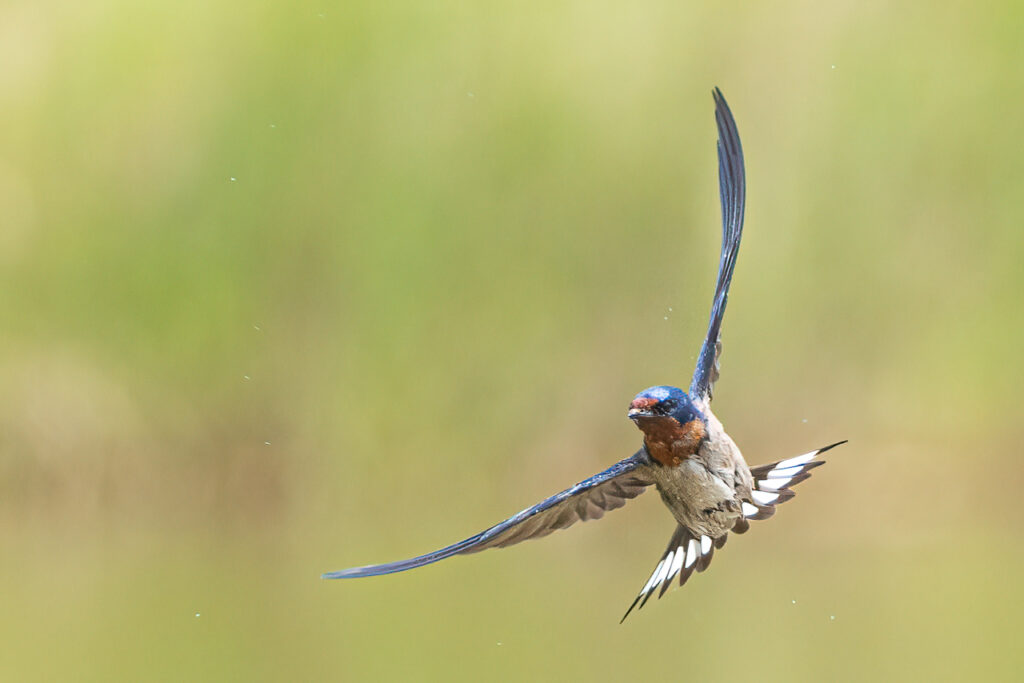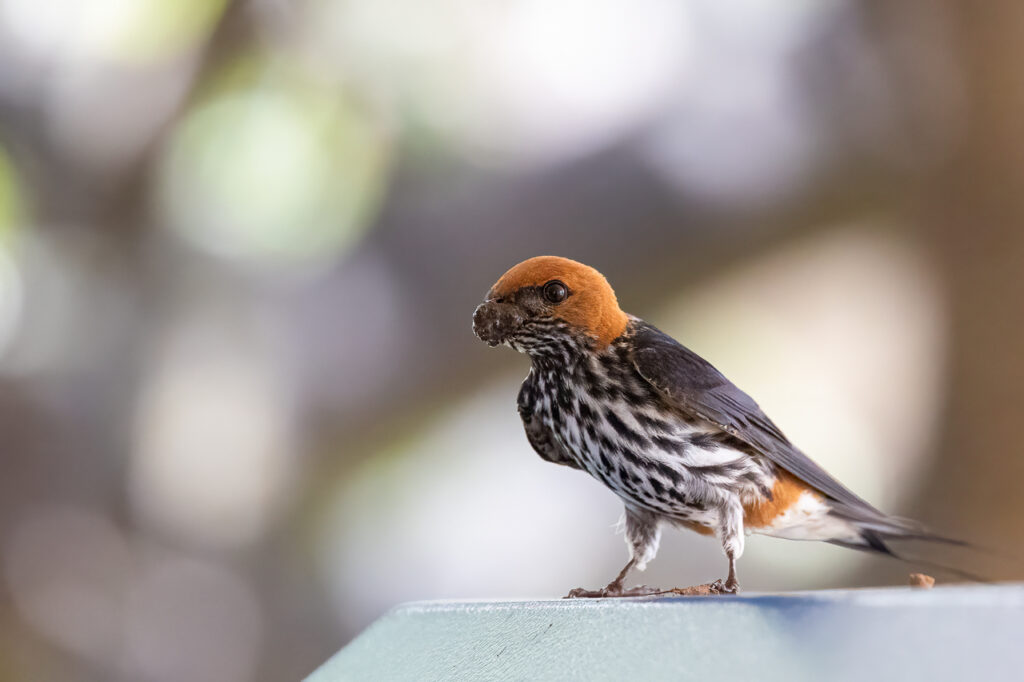Rwanda is home to sixteen members of the swallow family, which is called Hirundinidae. Nine of these are ‘true swallows’, the remaining seven consist of two saw-wings and five martins. The most common and familiar swallow plumage is glossy dark blue above complemented by plain or streaked underparts, the Lesser-striped, Wire-tailed and Angola swallows are great examples of this plumage theme. However, those that excavate their nests from earth and sand banks tend to have more subdued and plainer plumage, the Black Saw-wing and Brown-throated Martin are great examples of this other common theme of swallow plumage. In all swallow species there is little difference in plumage between adult males and females, although females generally have shorter tail feathers and shallower forks in their tails; juveniles have duller plumage.

All swallow species are migratory in some way or another – the migratory spectrum ranges from the Barn Swallow, which is a long-distance palearctic migrant, travelling to Rwanda after breeding in countries across Europe and Asia each year. Others, like Blue Swallow, are intra-African migrants and travel across parts of the African continent following the seasonal movements of flying insects, their main prey. Most species found in Rwanda, such as Wire-tailed and Mosque Swallows are breeding residents and call Rwanda home all year round. The legs of swallows are short, and their feet are adapted for perching rather than walking, as the front toes are partially joined at the base. Swallows are capable of walking and even running, but they do so with a shuffling, waddling gait. Swallows are excellent flyers and use these skills to both feed and attract mates.

The diet of the swallow family consists predominantly of flying insects, which are caught on the wing (whilst flying). They do not scoop up every insect around them, but instead select larger prey items and will actively avoid stinging insects like wasps and bees. Where food is abundant the different species of swallows and even swifts will come together in large concentrations. Where several species of swallows feed together, they separate into different niches based on height off the ground, some species feeding closer to the ground and others feeding at higher altitude. While visiting Nyandungu Eco-Park one evening I witnessed over 500 Lesser-striped Swallows above me feeding in the late evening sunlight – an awesome experience I will not forget! Whilst swallows have small beaks, they are able to open them wide – to swallow their prey! By having short beaks swallows can see and track prey items all the way into their mouths.

By feeding on flying insects the swallow family helps control the spread of diseases such as malaria, sleeping sickness, dengue fever, and zika virus. Swallows will often drink and bathe by skimming low over water and can be found in communal roosts during the day, sunbathing on exposed perches. These gatherings also allow the swallows to exchange information about where food can be found, as well as look for mates.

Swallows produce a variety of calls and songs which are used to communicate with other members of the same species – alarm calls, songs to attract a mate, and begging calls by the young to solicit food from parents. Swallows are generally monogamous with both parents provide parental care to the young. Their nests are one of three general types: burrows in sandy soils, adopted cavities, and nests made of mud pellets which are constructed by both parents. Mud pellet nests are attached to vertical structures and often beneath an overhang. The nests vary from an open cup shape to enclosed retort nests, with chambers and entrances. Each pellet is collected from a muddy puddle and brought to the nesting site by the parents. Eggs laid in open nests are usually camouflaged, whereas those in enclosed nests are plain white.


The swallows are fascinating birds to watch and listen to, whether they’re acrobatically hunting on the wing or perched together in a gregarious communal roost – Rwanda provides ample opportunities for seeing these charismatic birds, including Kigali where a number of species can easily be found!


Fantastic article, so well documented! ❤️
Thank you Will!
Stunning work of art! Superbly written and amazingly photographed. Much obliged for sharing such a great information.